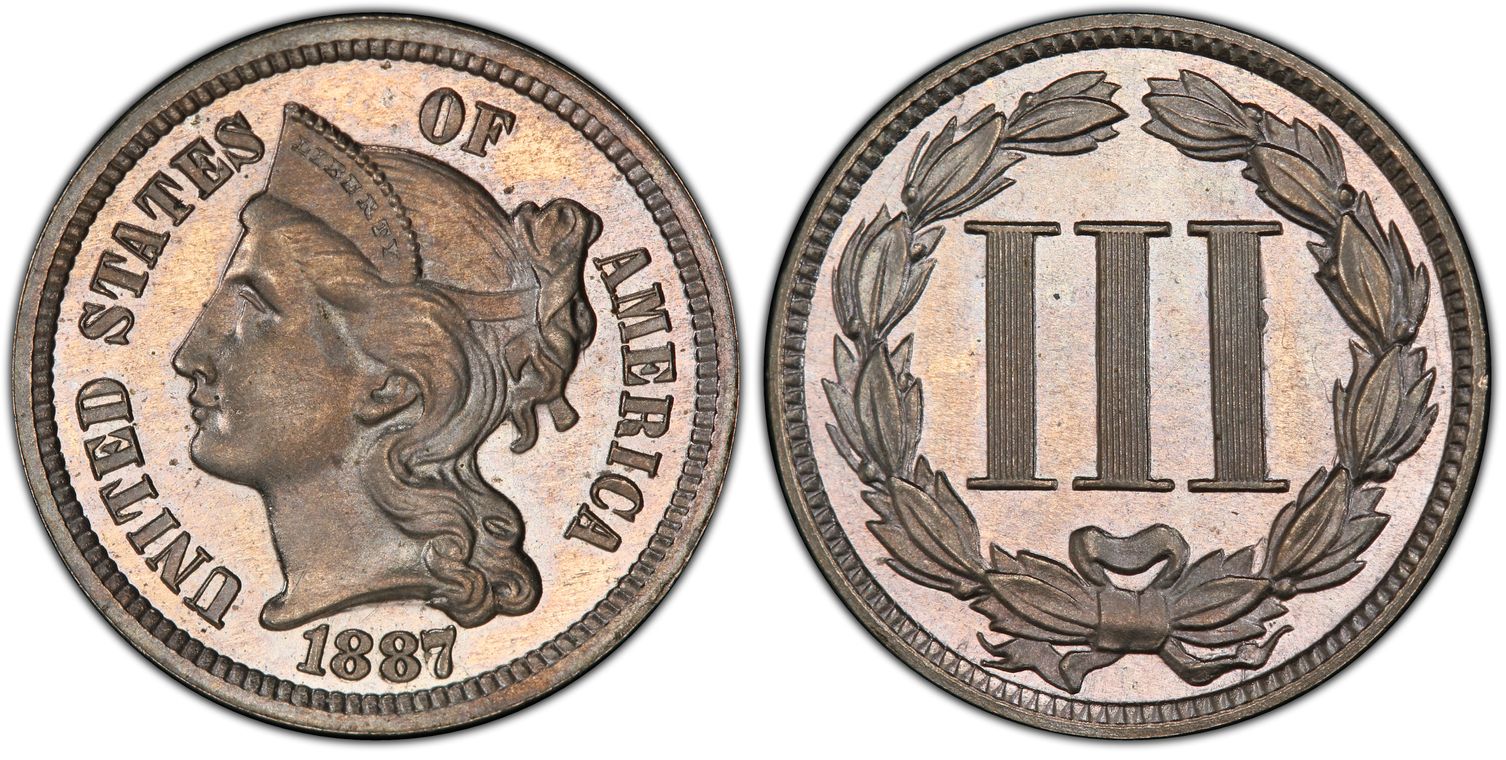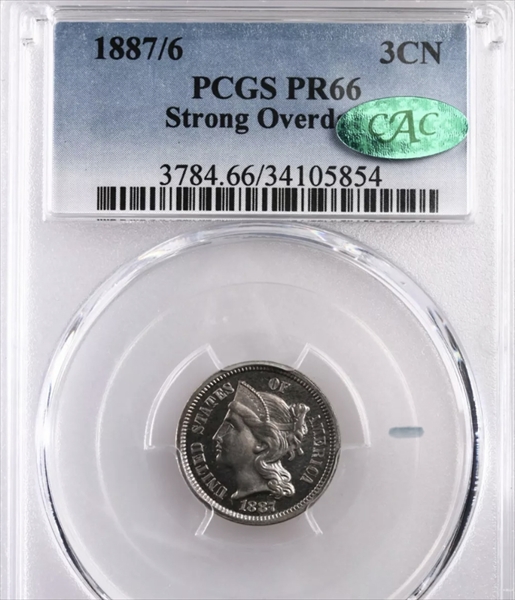Ron Guth
Apparently, all of the 1887 Three Cent Nickel dies were overdated from 1886. It is possible that dies dated 1886 were left over from production in 1886 then reused, but it could be possible that the engraver of the Proof dies started making the 1887 Proof dies with a simple mistake. Since the dies for each year's production were made at the end of the previous year, it is natural that the engraver could forget that he was producing dies for 1887 in 1886, and simply grab the old 1886 date punch. This appears to be the case for the multiple dies used to produce Proof Three-Cent Nickels for 1887. Once the mistake was realized, some effort was made to efface the error by grinding (or polishing) the dies, but based on the evidence of the coins themselves, this appears to be a hit-and-miss effort. What we have today are two different varieites known as the Strong Overdate and the Weak Overdate. True to their names, the Weak Overdate has barely visible remnants of an underlying 6 and the Strong Overdate has a rather sharp 6 underneath the 7. Collectors value these varieties differently and the Strong Overdate usually commands a premium over the Weak Overdate variety.
The total populations of the two varieties are nearly identical, though the Strong Overdate has a slight edge. Cameo examples are very rare and, here, the Weak Overdate is almost four times as rare as the Strong Overdate. Deep Came examples of either variety may be non-existent. Neither variety is known above PR67.






















